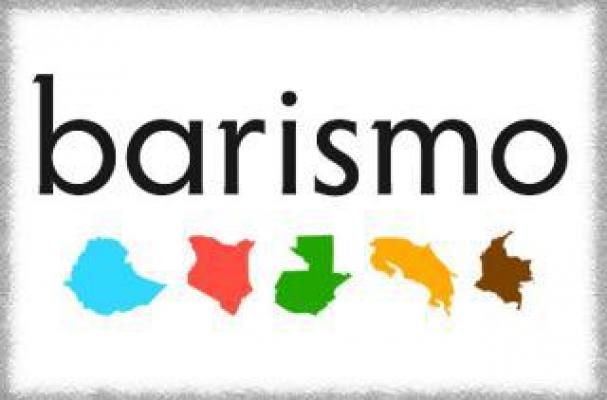
At this past Wednesday's #foodistachat, Barismo was kind enough to stop in and take questions on all things coffee as our featured guest. Without further ado, the recap:
Wahoo, it's coffee o'clock! Welcome, all, let's kick off our chat. Who's here, and where are you tuning in from? #foodistachat
— Foodista (@foodista) June 13, 2012
Please welcome this month's guest @barismo, a MA roaster that focuses on small estate, direct relationship coffee purchasing #foodistachat
— Foodista (@foodista) June 13, 2012
@efficient Syphon or vacuum pot brewing is the most difficult but often our favoritebrew method #foodistachat
— roasting + sourcing (@barismo) June 13, 2012
@efficient The methods vary but the best way is fresh roast, fresh ground, and fresh brewed... the basics.We love the single cup devices.
— roasting + sourcing (@barismo) June 13, 2012
@efficient Perc is one of the poorer forms of brewing, tends to overextract by function producing often quite bitter coffee#foodistachat
— roasting + sourcing (@barismo) June 13, 2012
@geezshock We like the v60 by Hario but it takes patience and attention to detail. Not a grab and go coffee#foodistachat
— roasting + sourcing (@barismo) June 13, 2012
@barismo I LOVE the Hario V60 ceramic ! I use it to make coffee daily.You're right, it does take patience #foodistachat
— Greg K (@geezshock) June 13, 2012
@IFBC We have lot's of anecdotal evidnce that points to what in terroir influences taste, but real research and studies needed #foodistachat
— roasting + sourcing (@barismo) June 13, 2012
@IFBC That's hard to quantify, we think of terroir/farm processing/varietal as equal standing and hard to separate.#foodistachat
— roasting + sourcing (@barismo) June 13, 2012
@Cfookd We are pretty minimalist but have been experimenting with using good coffee in food/pastry.#foodistachat
— roasting + sourcing (@barismo) June 13, 2012
@EatingTools Too hot is never good, from an evaluation standpoint.Personally, coffee as it begins to cool really opens up. #foodistachat
— roasting + sourcing (@barismo) June 13, 2012
@foodista that it's easy to make correctly
— Alan Andrews (@coffeeculture) June 13, 2012
@foodista Darker is better is the biggest misconception, followed by all light roasts are acidic.#foodistachat
— roasting + sourcing (@barismo) June 13, 2012
@jamesonfink I can't remember what the ratio was, but I do find that steeping for 4 minutes is a good time for a French Press.
— NOVO Pizzeria (@NOVOPizzeria) June 13, 2012
@jamesonfink 4 minutes total, 205f, 8-10g per 5oz is a good recipe, gentle agitation at 3 mins in.#foodistachat
— roasting + sourcing (@barismo) June 13, 2012
@jamesonfink Ppl tend to overcorrect and grind way too coarse/underextract, warming everything before you brew helps as well.#foodistachat
— roasting + sourcing (@barismo) June 13, 2012
@jamesonfink French press is tough because it loses so much temp while brewing.Try using a less coarse grind 1st#foodistachat
— roasting + sourcing (@barismo) June 13, 2012
@foodista Getting a good grinder is the best investment any coffee drinker can make#foodistachat
— roasting + sourcing (@barismo) June 13, 2012
@foodista Filtered water, a burr grinder, and a scale can get you a long way.A thermometer helps too#foodistachat
— roasting + sourcing (@barismo) June 13, 2012
@barismo any inexpensive grinder recommendations for the home ? #foodistachat
— Greg K (@geezshock) June 13, 2012
@geezshock Baratza has a great lineup for home users besides those, the Hario Hand Mill is the best travel grinder we've found #foodistachat
— roasting + sourcing (@barismo) June 13, 2012
@foodista A pantry works.Cool and dry, stable.Also keeping the bag closed and out of open air or sealed is even better.#foodistachat
— roasting + sourcing (@barismo) June 13, 2012
@KitchenFans Storing it, oxygen and cross contamination is the enemy.if in the fridge or freezer, it has to be sealed tight #foodistachat
— roasting + sourcing (@barismo) June 13, 2012
We've got about 15 minutes left. @barismo, could you talk a bit about how y'all source your coffee? #foodistachat
— Foodista (@foodista) June 13, 2012
We have a sourcing program built around traveling mostly in Central America to work with farms.#foodistachat
— roasting + sourcing (@barismo) June 13, 2012
The idea is to tie what we pay directly to farms to the quality we are asking them to produce.#foodistachat
— roasting + sourcing (@barismo) June 13, 2012
It allows us to provide a unique accounting of what makes each coffee special and present it to coffee aficianados#foodistachat
— roasting + sourcing (@barismo) June 13, 2012
@barismo awesome. Do you think should pay more attention to the roasting date of the coffee they are buying ? #foodistachat
— Greg K (@geezshock) June 13, 2012
@geezshock From a technical standpoint, all the unique volatiles and complex flavors fade over time, roast dates matter#foodistachat
— roasting + sourcing (@barismo) June 13, 2012
@geezshock Why drink stale old coffees if all it takes is finding something with a roast date and giving it a shot?#foodistachat
— roasting + sourcing (@barismo) June 13, 2012
@geezshock Roast dates are important, we advise finding a local roaster who puts out fresh roast dated coffee and trying it#foodistachat
— roasting + sourcing (@barismo) June 13, 2012
@foodista Thanks for the invite, that was fun!#foodistachat
— roasting + sourcing (@barismo) June 14, 2012
@barismo I'm so glad you enjoyed it! Your expertise was invaluable. #foodistachat
— Foodista (@foodista) June 14, 2012
And thank you to our esteemed attendees. See you at next month's chat, which will focus on cookbook/ebook publishing. #foodistachat
— Foodista (@foodista) June 14, 2012
Image Sources:










